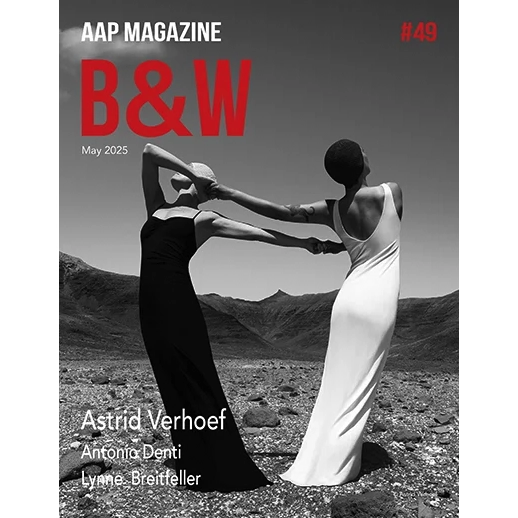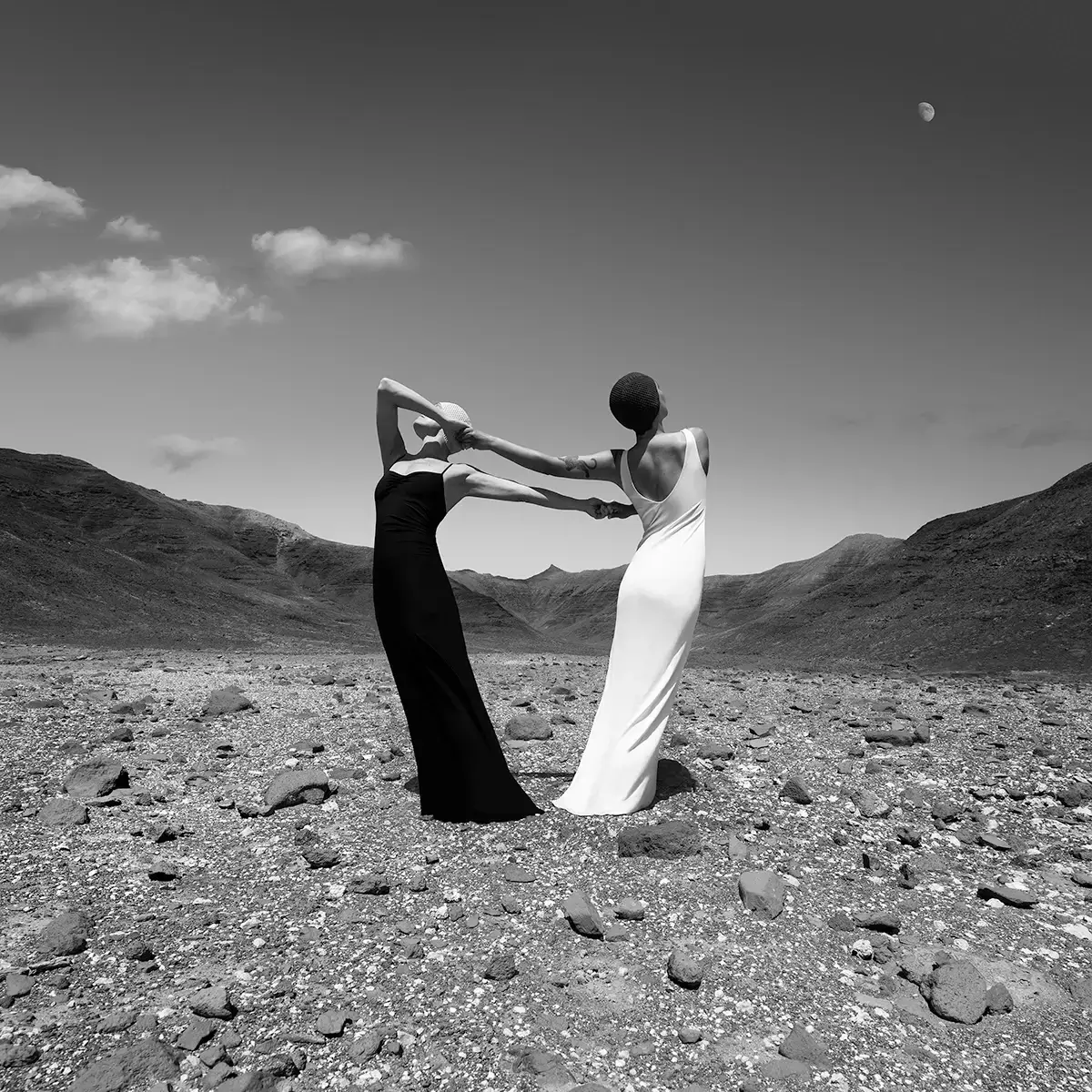Each of these talented photographers has delivered stunning monochrome images that celebrate the depth, nuance, and timeless beauty of black and white photography.
Selected from a wide range of submissions from across the globe, this edition brings together photographers from 11 countries spanning 3 continents, offering a compelling look at the emotional power and creative possibilities of the black-and-white format. From classic street photography to experimental fine art, documentary to conceptual storytelling, the selected works explore identity, silence, memory, contrast, and composition in breathtaking ways.
The winning images in
AAP Magazine #49: B&W demonstrate the versatility of black and white photography as both an expressive and narrative tool. Some artists emphasize texture and form, while others lean into stark lighting, abstraction, or deeply personal themes. Whether shot on analog film or through modern digital techniques, the work resonates through its clarity, emotion, and artistry.
In addition to being published in the print edition of
AAP Magazine, the winners receive international exposure, featured on All About Photo’s website and across social media channels with a global audience of photography professionals and enthusiasts. This opportunity is a meaningful recognition of their talent and an inspiring step forward in their photographic journey.
We hope you’ll find as much inspiration in these images as we did.
Black and white photography remains as relevant and powerful as ever — and these artists prove it.
The Winner is Astrid Verhoef (Netherlands) with the image 'Balance'
The artwork ‘Balance’ was shot in March 2025, at the beautiful Peninsula de Jandia, Fuerteventura, Spain.
For all my artwork I’m exploring my relationship and connection to the natural world, usually portraying a figure that always seems to linger somewhere between the natural and an artificial element preventing her from truly connecting. Like a trace from the world she can’t leave behind.
I am used to working solo to experience my personal connection to the landscape in the most profound way without any distractions. Even though I treasure that connection and it works very well for me this way, at rare occasions I do want to work with an extra model. This particular posture is the result of movement, dancing together.
It did change the experience: a dance of balance showing a connection with each other as well as with the landscape. We are one and opposites at the same time. Contrast and connection, trust and dependance. Feeling a force of nature within and around ourselves, strength and balance in the volcanic landscape where barren meets beauty.
Working intuitively within the framework of the general theme within my work (exploring modern humankind’s place in the natural world in a metaphorical fashion), this artwork is for now considered a ‘single image’. It is not (yet) part of a series, but it might be part of a series yet to take shape.
All work is lens-based and do not contain any AI generated components. Photography takes place in landscapes on location. Basic Photoshop tools were used, such as color /contrast adjustments, and collage techniques (if needed for the desired final image).
Models: Didi Marie Krahmer & Astrid Verhoef
astridverhoef.nl
@astrid_verhoef
All about Astrid Verhoef
The Second Place Winner is Antonio Denti (Italy) with the series 'Harder Lives''
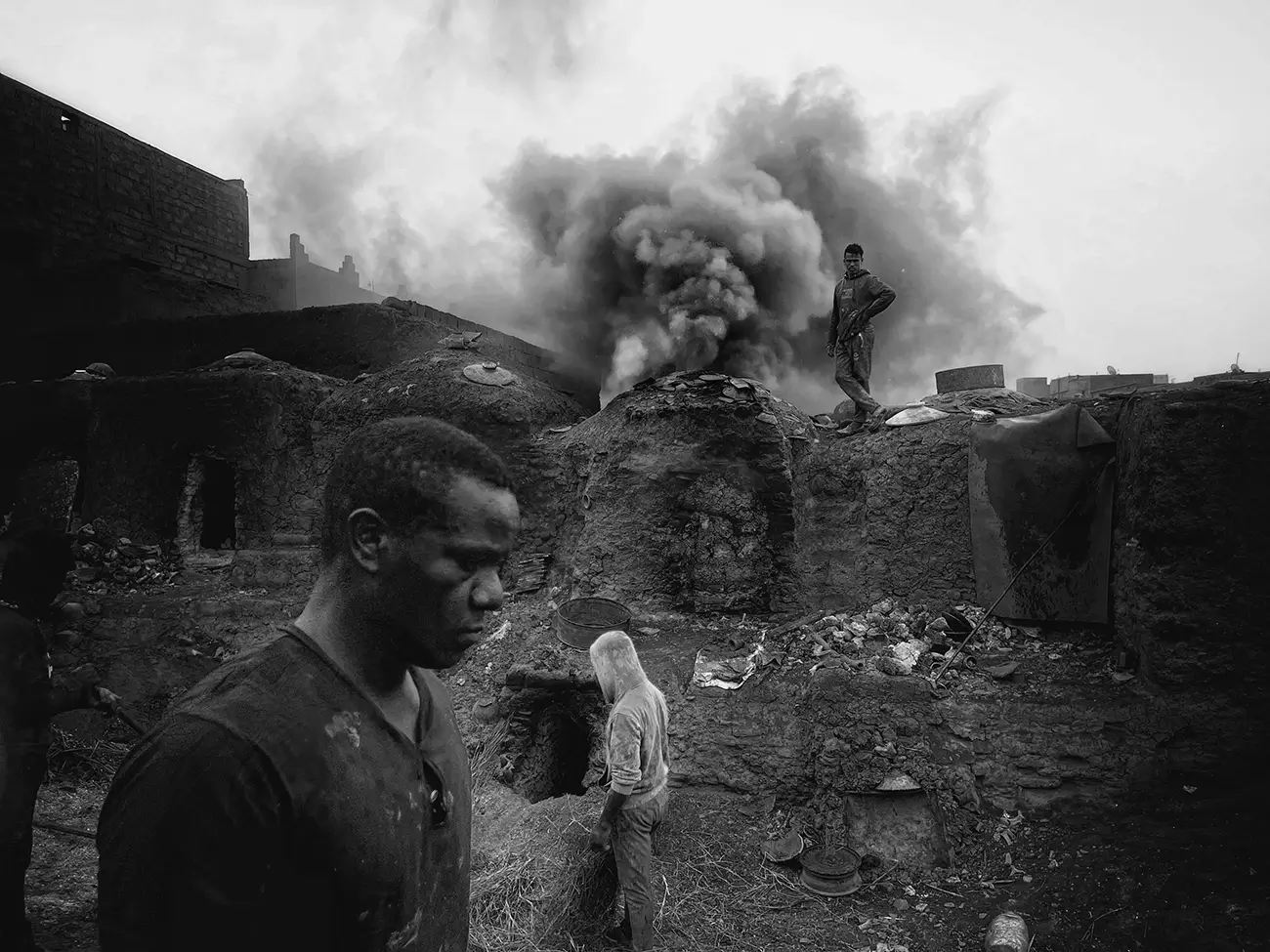
Harder Lives © Antonio Denti
Souvenir makers at work on the edge of the Sahara Desert, as in the small town near-by their families live on. ''Harder Lives'' is part of a wider project called ''Everything and Nothing'' that tries to capture the moving essence of the little lives - our little lives - in the backdrop of the global economy and of a massive new industrial revolution in very different settings. In this case a small village in Morocco that used to live off very little (dates, palms, small herding, minor caravans) and now shifted to global tourism as all kinds of people travel there from all places in the world to see the magic marvels of the Sahara.
@antclick
All about Antonio Denti
The Third Place Winner is Lynne Breitfeller (United States) with the series 'People I Know''
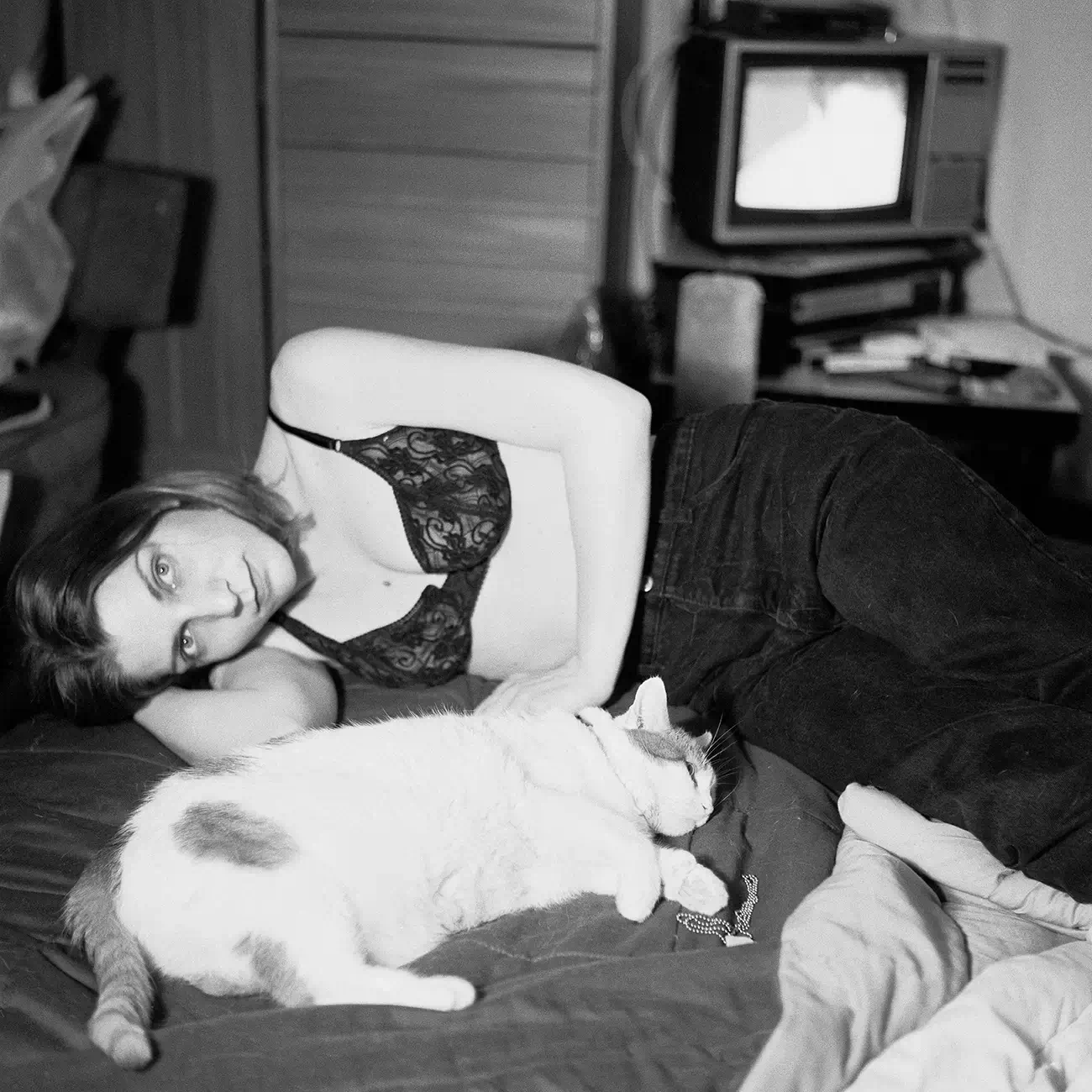
Stacy and Miss Kitty from the series 'People I Know' © Lynne Breitfeller
This image, “Stacy and Miss Kitty”, is from “People I Know”, a collection of portraits, created in the early to mid-nineties of friends, family, and acquaintances. Some are candid, and others are performative.
These photos bring me back to earlier times and help me visualize my early adult years and how people come in and out of our lives, and how some stay. Each holds a place in the catalog of my memory.
www.lynnebreitfeller.com
@lynnebreitfellerphoto
All about Lynne Breitfeller
MERIT AWARD GALLERY
Russ Rowland (United States)
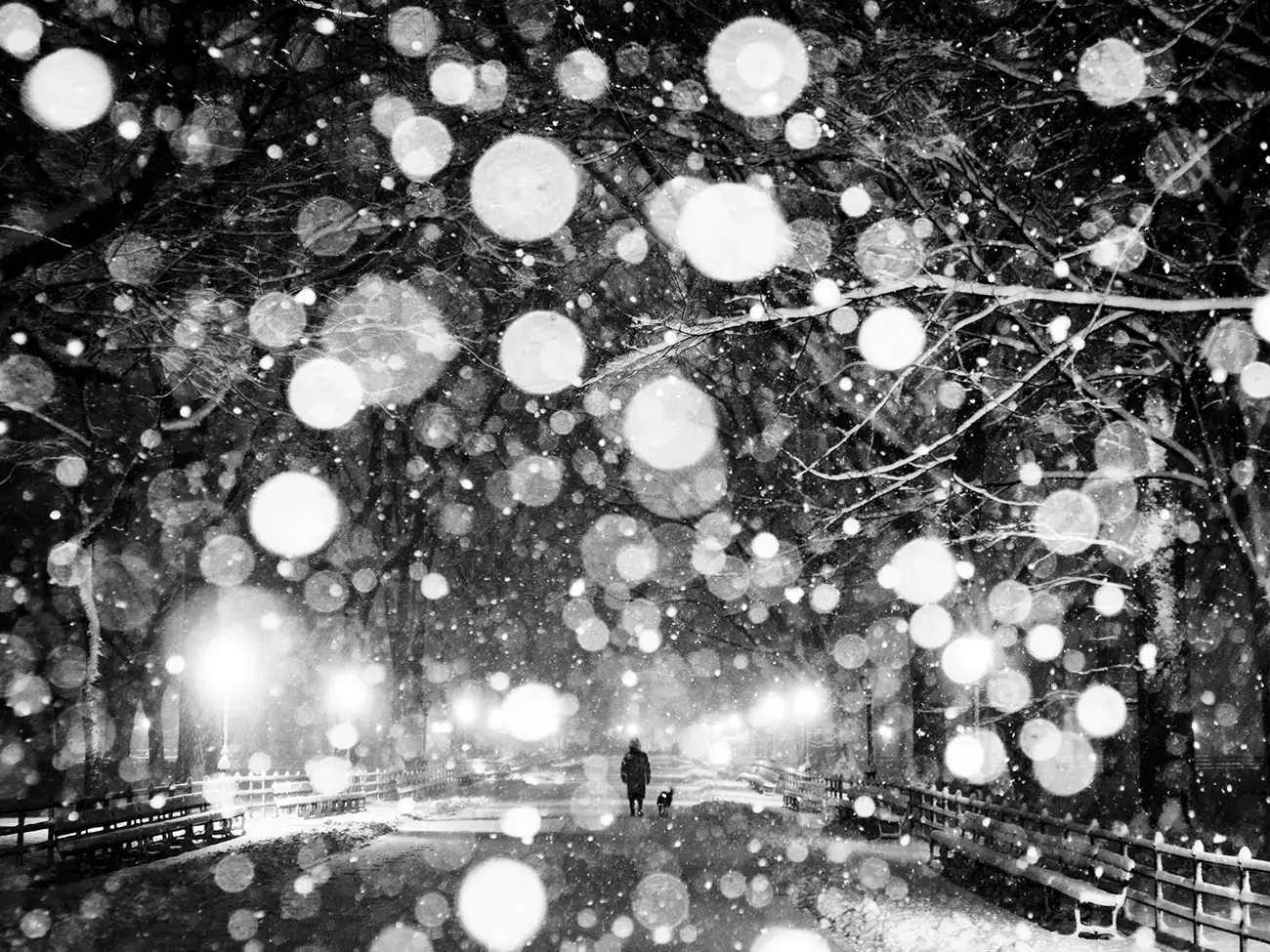
Wonderland © Russ Rowland
I used to think it was snow I loved to photograph. But over the years I've come to realize it's snow storms that obsess me, particularly after dark.
The more snow forecast, the more excited I get. New York City never seems more magical, no matter how late the hour or how far I walk.
All the normal rules and logic of city life are blown aside, and all the imperfections are blanketed, abstracted or rendered anew.
www.rrsnapshop.com
@russrowland
All about Russ Rowland
Julia Dean (United States)
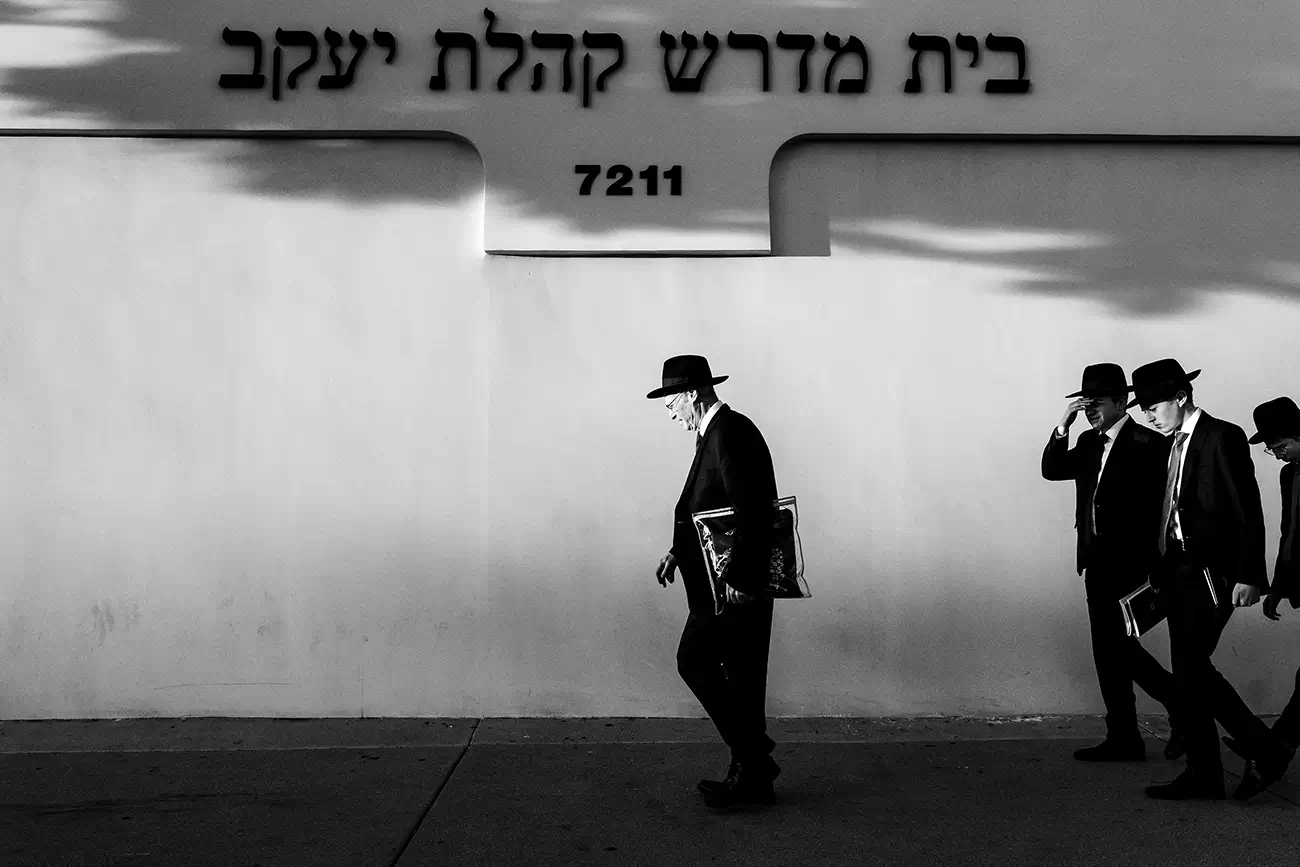
Shabbat from the series 'On the Streets in Los Angeles' © Julia Dean
I was with my friend and co-director of our Street L.A. Collective, Dan Sackheim, cruising down the street in my car looking for something interesting to shoot. Dan was on his phone when I saw some great light against a synagogue on Beverly Blvd. There was a parking spot right in front, so I pulled in, got out and stood in the street between two cars and waited for people to walk past the wall. No one could see me. A few people walked past the temple, one by one. I waited patiently, with my camera to my eye, with this exact composition, when these Orthodox Jews came out of nowhere and into my frame, before going inside to observe Shabbat.
juliadean.com
www.streetla.org
www.thelaproject.org
@juliadean_la_streetshooter
John Carey (United Kingdom)
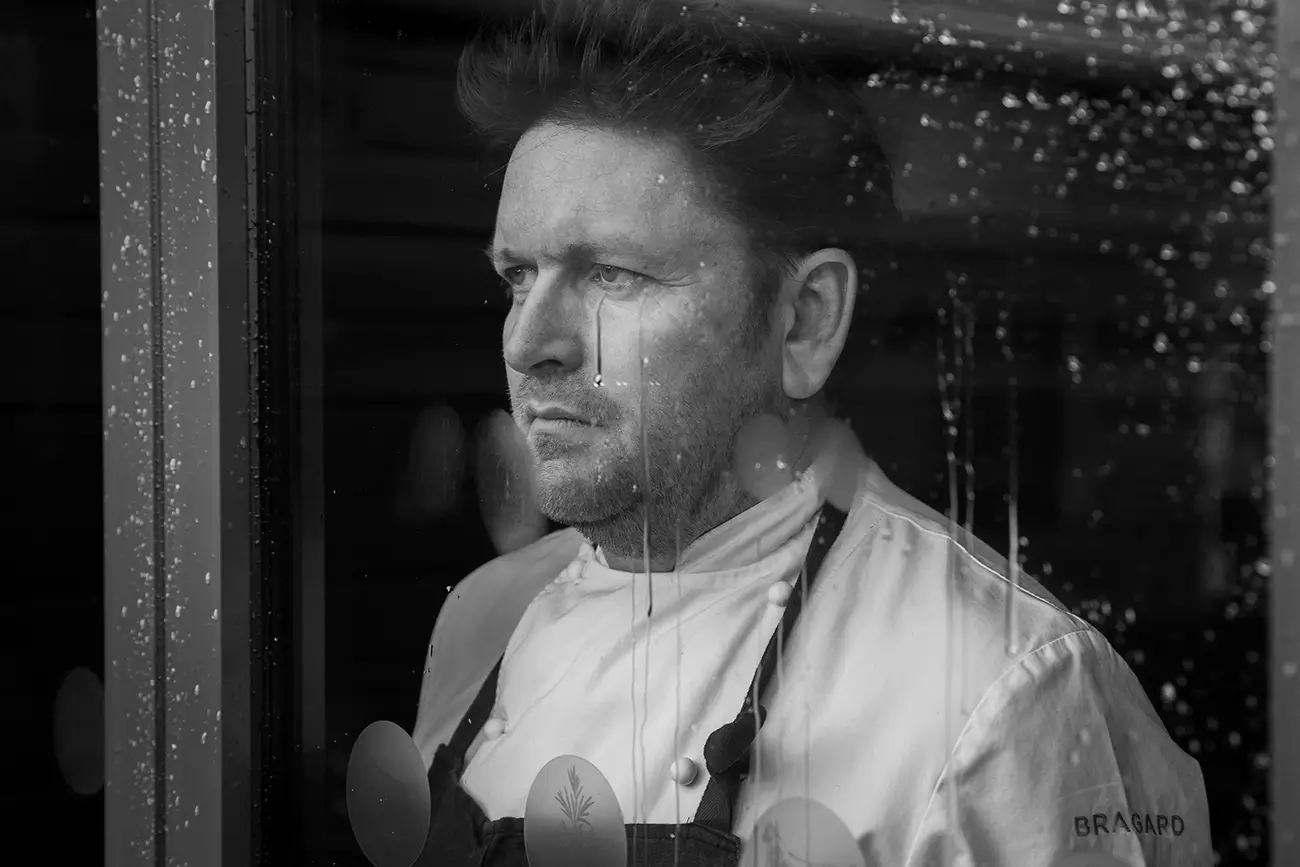
James Martin, Chewton Glen from the series Chefs in Lockdown © John Carey
On March 21st 2020, in response to the Covid 19 pandemic, the UK Government forced restaurants to close their doors. This was an unprecedented moment in time.
After a time spent locked down at home with my family, I started to think about how much of my life I spend in restaurants.
I started to think about what was happening inside the restaurants themselves. How were they left after the ‘final’ service ? What were they like now ? These warm, welcoming places must be cold, abandoned, neglected, deteriorated ? and what about the chefs themselves?
I had no work, no income and I wanted to be creative. So decided to photograph chefs in their restaurants, to tell a story as a metaphor for the lockdown experience within the restaurant industry. The isolation, the neglect, the vulnerability, the raw emotion, the social distancing. It was a self-motivated, self-funded project, so I applied for a loan and started.
I needed to take a different photographic approach from my usual style. I wanted these portraits to be 'of the time'. Most of my work is in colour, but the colour had been drained from the restaurants, I usually ‘light’ portraits, but I didn’t want to add any layer of gloss/shine, the lights had literally been turned off.
I wanted the images to be real, raw and completely stripped back. I also wanted the chefs to be still, very still. The world of restaurants had temporarily stopped and I wanted that reflected in the chefs stance. There was no service that day to think about, so I wanted them to be present and reflect on the situation they were in, that we were all in.
www.john-carey.com
john-carey.shop
@johncareyphoto
Lorenz Berna (Italy)
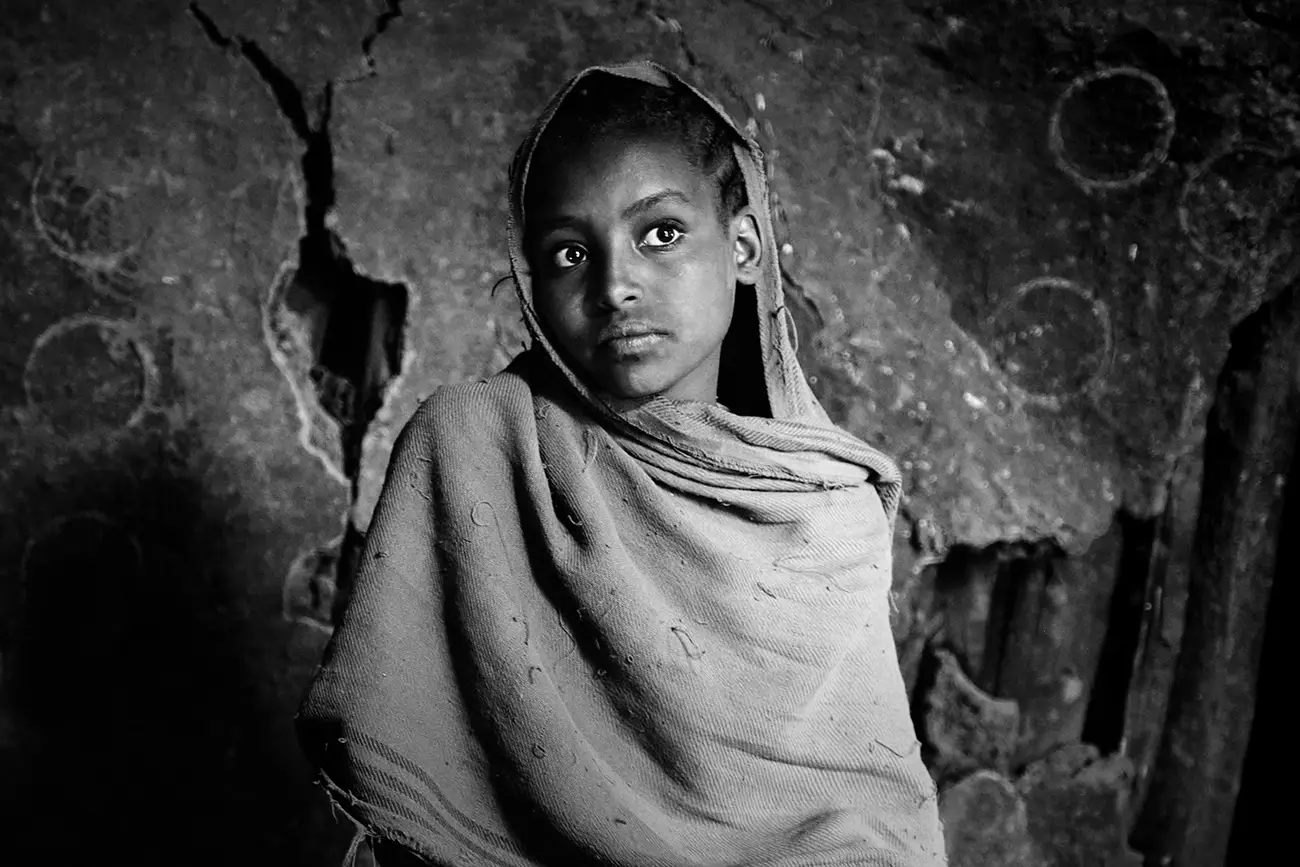
Light Through the Rift from the series 'Shadows of the Sacred' © Lorenz Berna
Shadows of the Sacred is my personal journey into the ancient rock-hewn
churches of Lalibela, Ethiopia. In these timeless spaces, I am drawn to the
interplay of light and shadow—how a single beam can reveal the quiet strength
and dignity within.
This photograph captures a fleeting moment of contemplation: a young girl
wrapped in silence and tradition, her gaze illuminated by the same light that
has shaped these sacred walls for centuries. Rather than document rituals, I
seek authentic, unposed encounters that express faith as it is truly lived—
intimate, vulnerable, and resilient.
Through these black and white series, I invite viewers to witness the everyday
spirituality that endures in Lalibela, and to experience the enduring power of
silence and devotion in a rapidly changing world.
lorenzberna.com
@lorenz.berna_photo
www.facebook.com/LorenzBerna
All about Lorenz Berna
Margaret Halaby (United States)
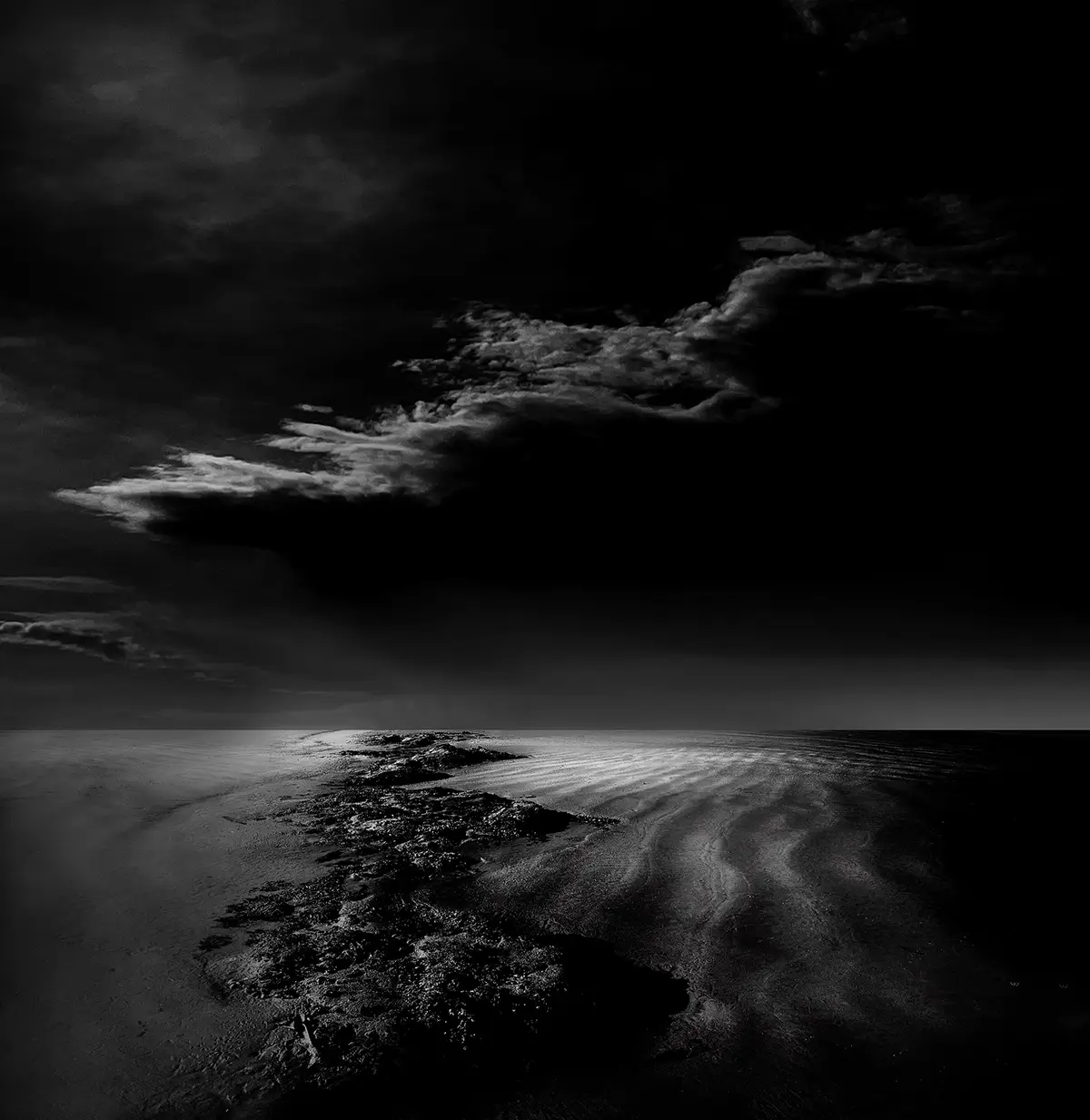
The Looming Dark from the series 'Solitary Spaces' © Margaret Halaby
This photo, The Looming Dark, is part of a series I call Solitary Spaces, photos of deserted spaces - in nature, by empty buildings - portraying places that resonate with our feelings of aloneness in a beautiful, but indifferent world.
1x.com/ygram
All about Margaret Halaby
Elena Donskaya (Russia)
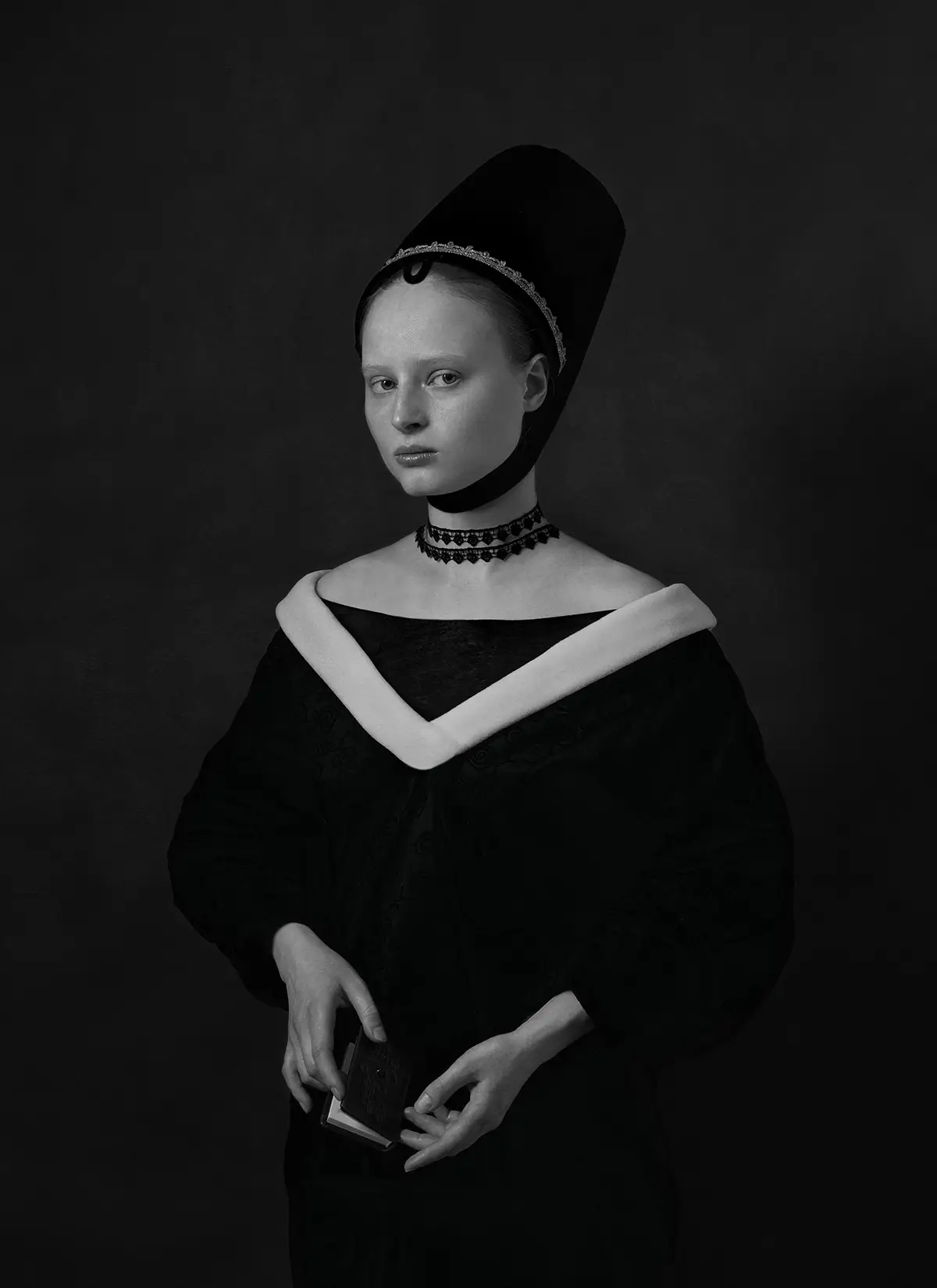
Young Woman © Elena Donskaya
Inspired by the Renaissance-era painting Portrait of a Young Girl by Petrus Christus..
@aledons55
All about Elena Donskaya
Yanitsa Genova (Bulgaria)
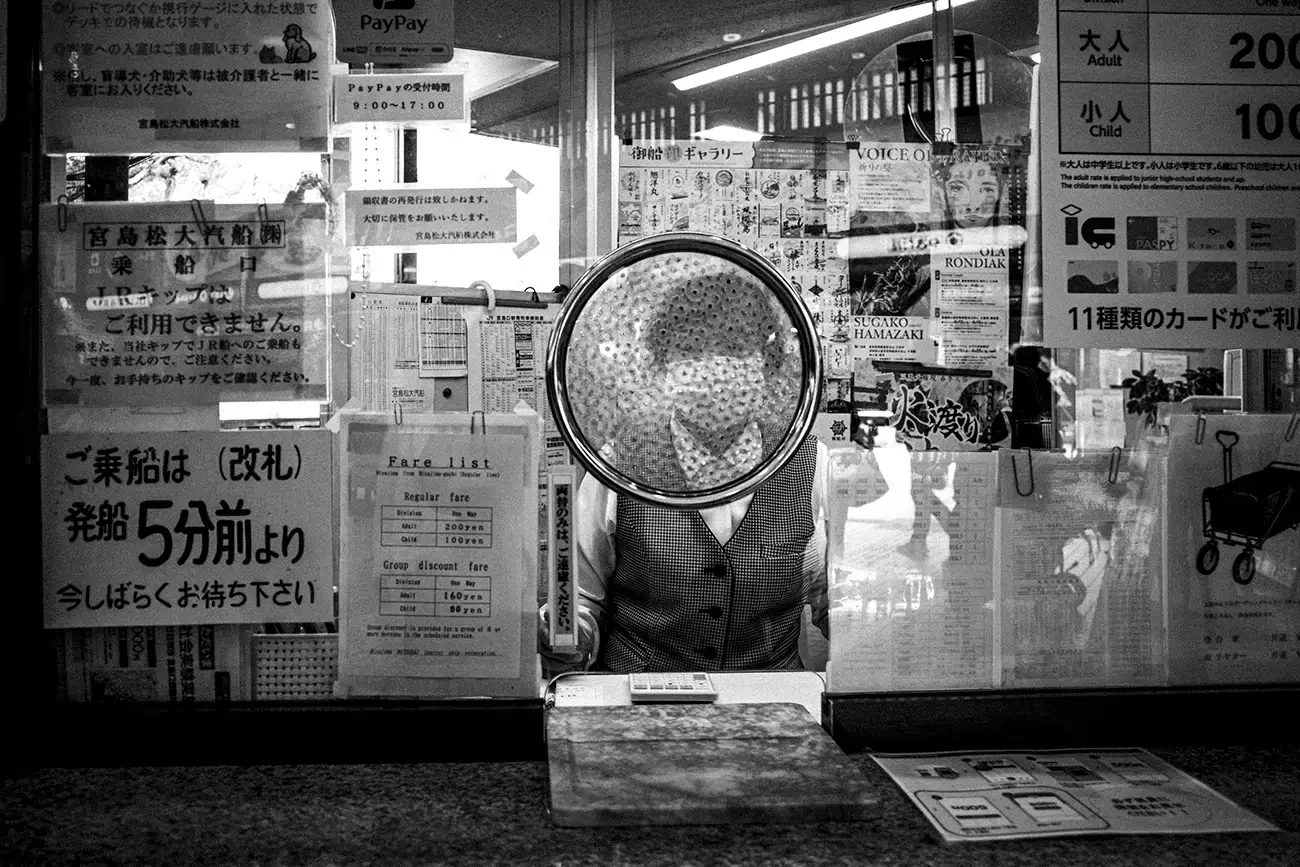
Trapped in the frame from the series 'Half-visible' © Yanitsa Genova
Half-Visible is an attempt to enter into harmony with the world. The photographs were taken
over ten years. What unites them is street photography, partial visibility, and the geometric arrangement of everyday life.
I point the camera at what changes my inner world. I am capable of looking at everything, both the most terrible and the most beautiful. I am here.
www.yanitsagenova.com
@yanitsagenova
All about Yanitsa Genova
William Ropp (France)
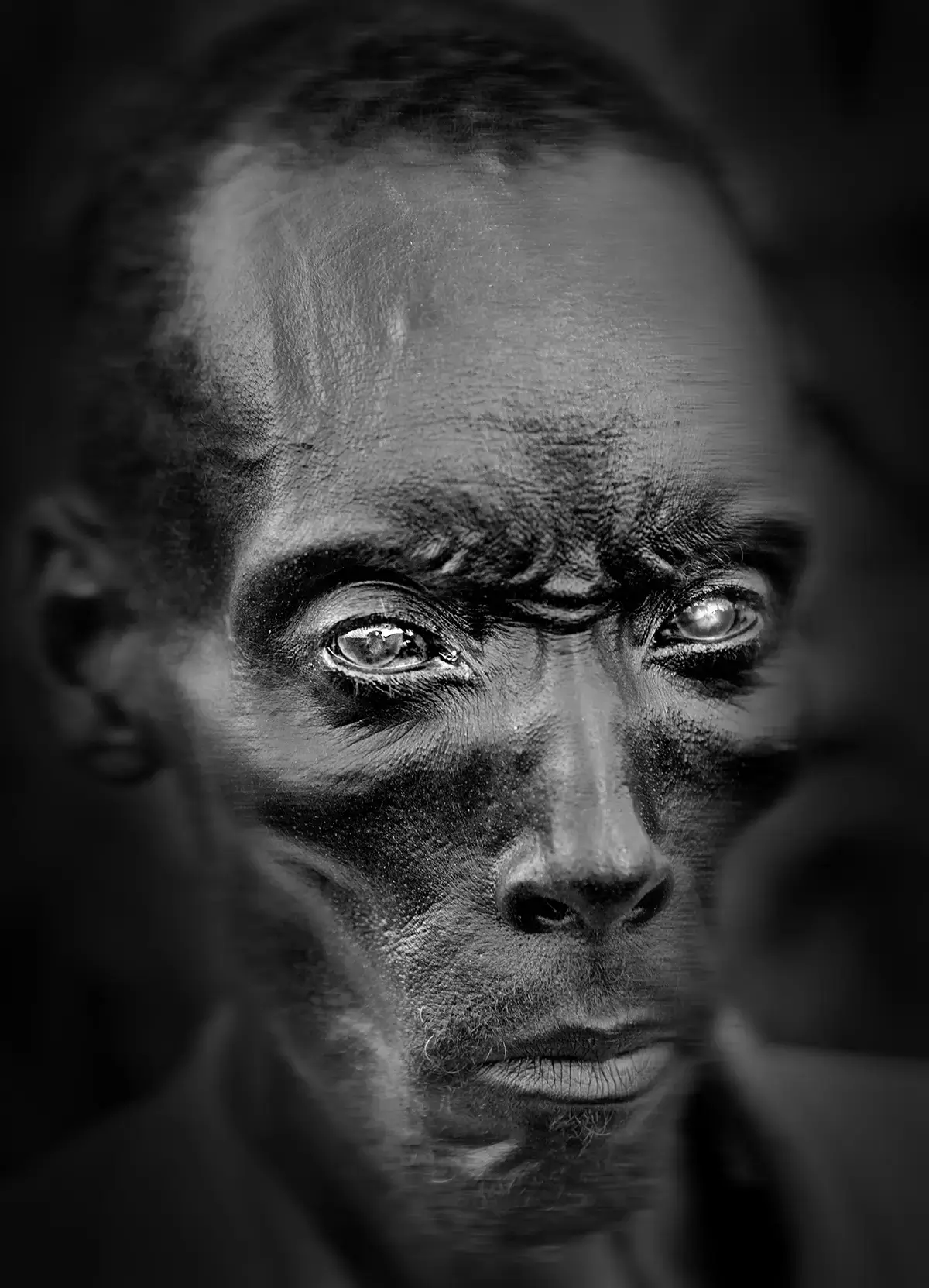
Ethiopia, the singular man from the series 'Dreamt memories from Africa' © William Ropp
William Ropp's black-and-white work in Mali, Senegal, and Ethiopia transcends simple documentary portraiture. It is an introspective quest for the other, a dive into the intimacy of African faces, rendered with rare visual and emotional intensity. At the crossroads of photography, shadow theater, and classical painting, Ropp reveals souls rather than bodies.
Ropp does not simply photograph faces: he seeks to capture what he calls the inner presence of his subjects. Through a play of light and shadow, he extracts a form of silent poetry, often timeless.
His black and white is deep, almost charcoal-like, and exudes a sense of suspended time. The faces seem to emerge from a dream or a distant memory. He thus creates a universe between reality and fantasy, often tinged with melancholy.
william-ropp.com
All about William Ropp
Klaus Lenzen (Germany)
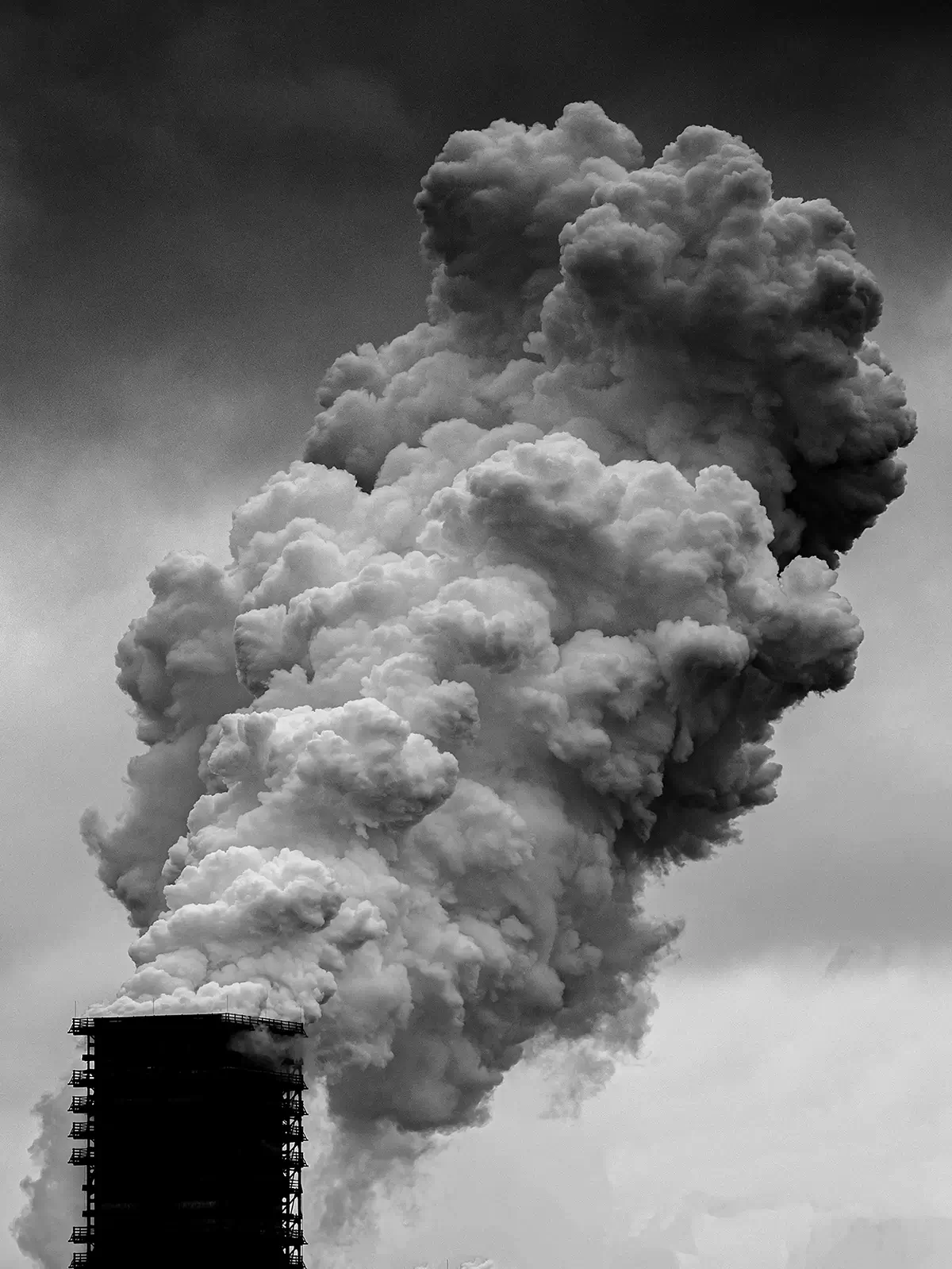
Steam IV from the series 'Steam' © Klaus Lenzen
The exhaust cloud from the quenching tower of a coking plant at a steel mill in Duisburg ( Germany), develops an impressive dynamic. Soon, new clouds form, hour after hour, day after day. As part of a long-term project, I captured these impressive clouds from various perspectives.
www.klauslenzenphotographie.com
@klenzen53
All about Klaus Lenzen
Sebastián Machado (Mexico)
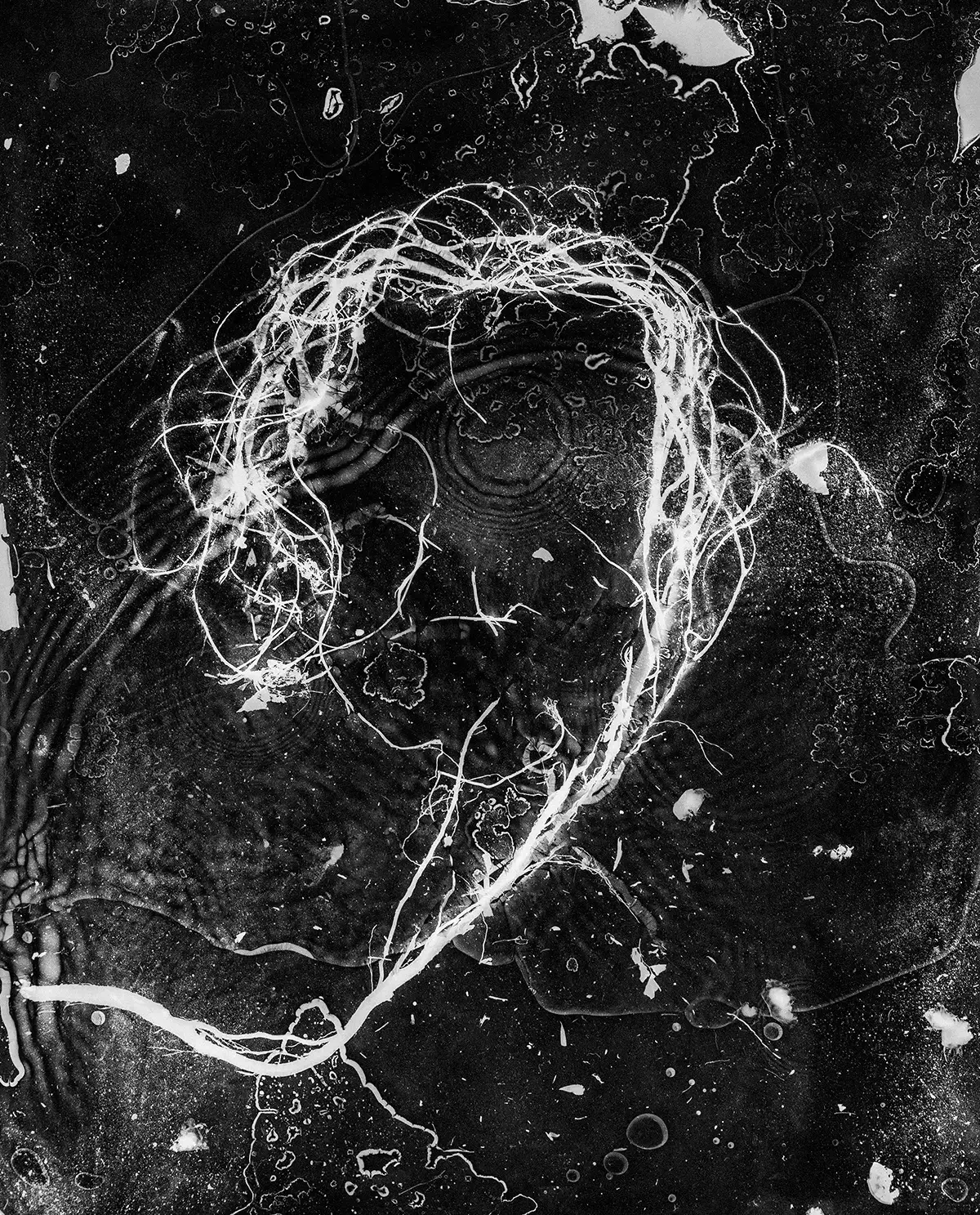
Untitled #3 from the series from the series Ashes from the Riverbed © Sebastián Machado
Ashes from the Riverbed stems from a family tradition of scattering the ashes of our dead in the garden and apantle—a canal that runs through my childhood home. Created by submerging photosensitive paper in water under moonlight, the photograms invoke absence rather than represent it. These images carry traces of a ritual process shaped by light, sediment, and memory, proposing photography as a gesture of mourning and belonging.
In my childhood home, a family tradition says that the ashes of our dead are scattered in the garden and the apantle—an irrigation canal—that runs through it. Ashes from the Riverbed stems from that story to create a series of photograms. By moonlight, immersed in the stream, I expose photosensitive paper with plants, sediment, and water to a beam of light. The resulting images don’t seek to represent absence, but to invoke it—to draw it from the depths. These are imprints of overlapping temporalities: mirrors where matter was touched by those no longer here, yet still with us. They trace a route into the realm of the dead. The photograms carry the marks of chance—my hands holding the paper, the trembling of water, the sediment left behind. This visual essay proposes the photographic image as ritual: a conjuring of suspended presences. In One Hundred Years of Solitude, Gabriel García Márquez writes: “We have still not had a death. A person does not belong to a place until there is someone dead under the ground.” This sentence lingers in me as a question about belonging, grief, and territory. In many pre-Hispanic cultures, it was common to bury the dead beneath the home, anchoring ancestry and mourning to everyday life. Today, death has been displaced—hidden away in cemeteries, sanitized, and made invisible in domestic space. This project asks: what would it mean to bring death back home? To “plant” it not as something morbid, but as a seed of memory—a gesture that roots us to a place, to a story, to those who came before us. This project explores the image not as evidence, but as gesture. Not as representation, but as invocation. The photograms bear the residue of a ritual process—gestures shaped by water, light, and the nocturnal landscape—where memory meets the invisible. By returning to the water that runs through my family’s land, Ashes from the Riverbed becomes both a farewell and an anchoring: a scenario of mourning, where absence is not erased, but held, submerged, and made visible.
www.sebastianmachadocom.com
@shompiro
All about Sebastián Machado
Thibault Gerbaldi (France/United States)
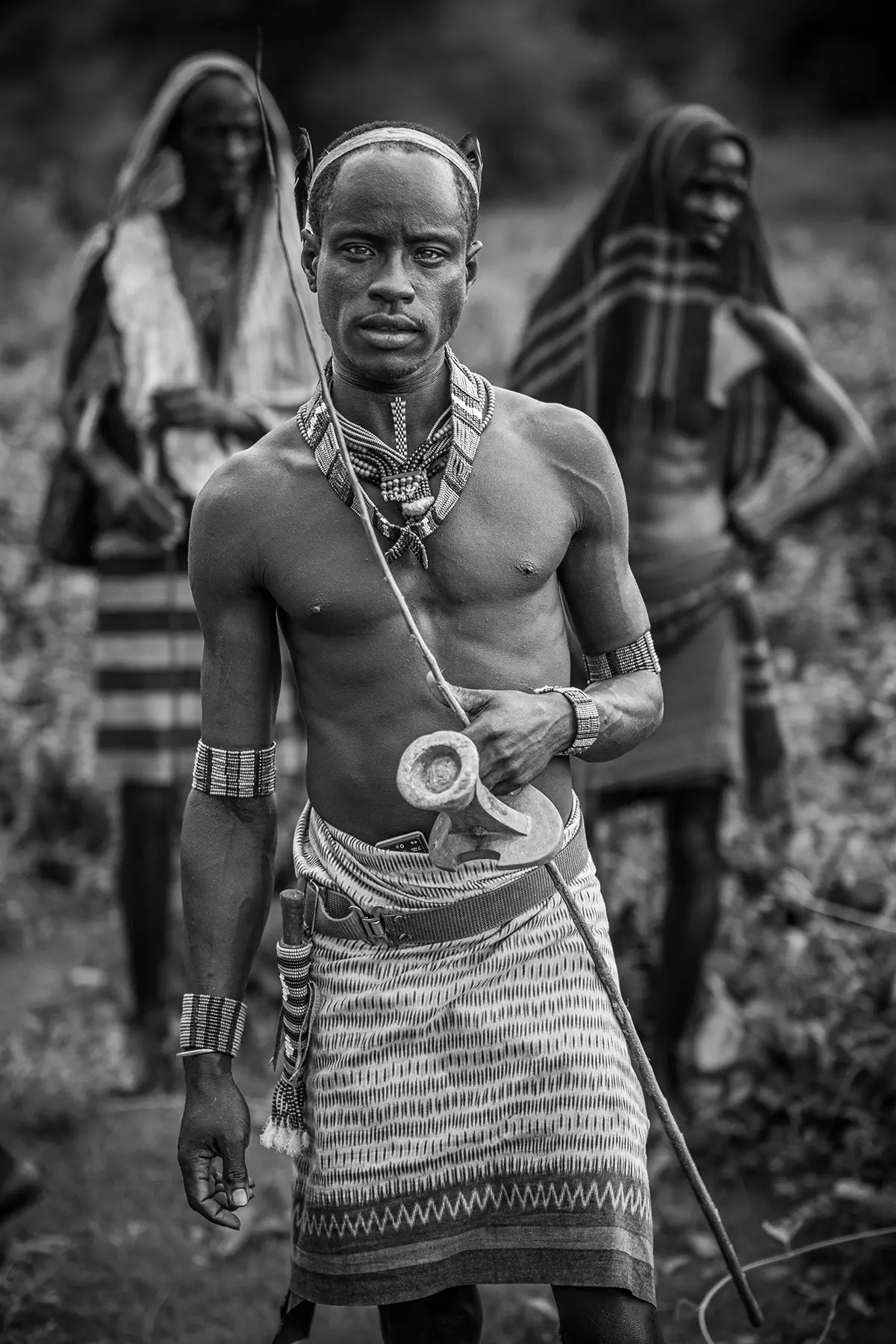
The Path to Adulthood © Thibault Gerbaldi
Among the Hamar of Ethiopia’s Omo Valley, the bull-jumping ceremony marks a young man’s passage into adulthood. Over several days, clans gather, rituals unfold, and the community plays its part—women singing and dancing, elders observing, peers preparing. In a world accelerating toward homogenization, these images capture a society holding fast to its own definitions of identity, strength, and belonging. They remind us that amid digital noise and disappearing nuance, tradition can still offer meaning—and resistance—to the erasures of modernity.
www.tgcrossroads.com
@tg_crossroads
All about Thibault Gerbaldi
Florian Kriechbaumer (Germany)
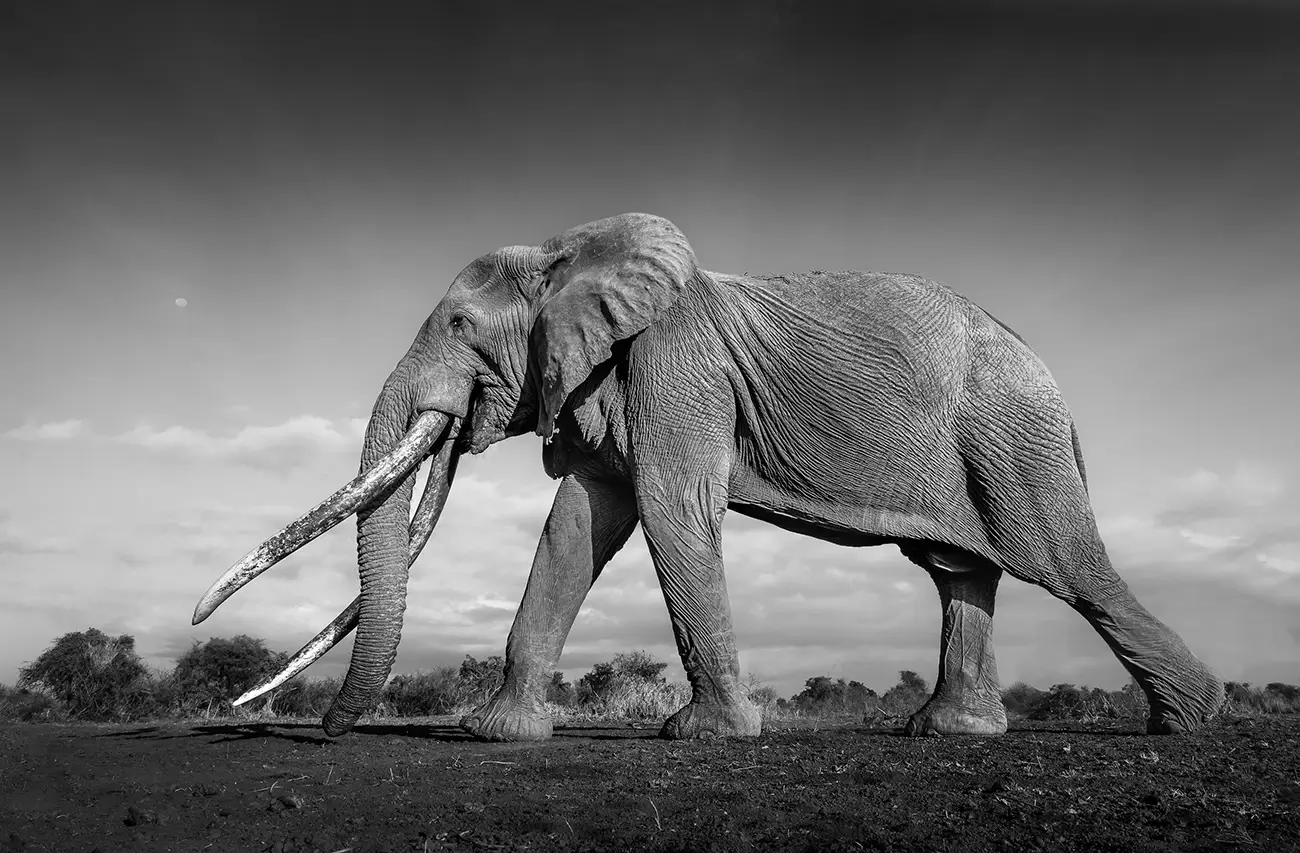
Colossal Legacy from the series 'Ivory Sentinels' © Florian Kriechbaumer
Craig is one of the last remaining Super Tuskers on earth - elephants whose tusks weigh over 100 pounds each and literally scrape the ground. At 53, he’s no longer a youngster, with maybe a decade of natural lifespan left, but carries himself with a calm, imposing presence. During my trips to Amboseli’s incredible landscapes, I had several encounters with him while documenting the ecosystem and the work of the rangers protecting it. In the past years, three big tuskers have been killed after crossing into Tanzania, where trophy hunting and human-wildlife conflict are ongoing threats. Craig has been leaving his Collosal Legacy for over five decades, but it is up to us to ensure his successors will be able to do the same.
theflore.com
@djflore
All about Florian Kriechbaumer
Eric van den Brulle (United States)
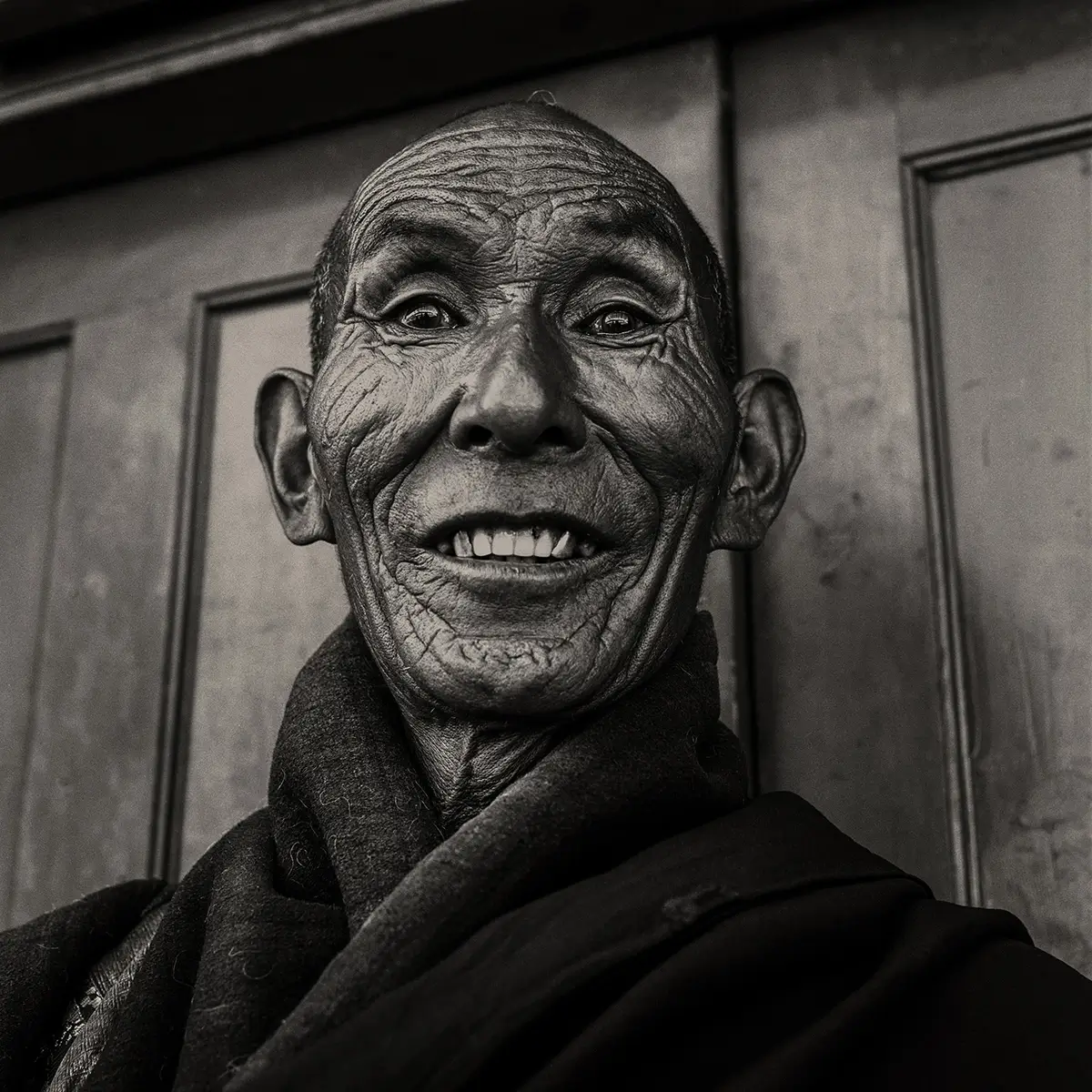
Reincarnated Tibetan Monk from the series 'Black & White'' © Eric van den Brulle
To photograph in black and white is to strip the world down to its essential truths. Without the distraction of color, light and shadow become language, texture becomes emotion, and form speaks with quiet clarity. Black and white photography is not a reduction—it is a distillation. It invites the viewer to see more deeply, to feel the weight of silence, the pulse of stillness, and the soul of a moment suspended in time. It is timeless, unflinching, and deeply human—an enduring meditation on contrast, nuance, and the power of simplicity.
www.evbphoto.com
@eric_van_den_brulle
All about Eric van den Brulle
Ralf Dreier (Germany)
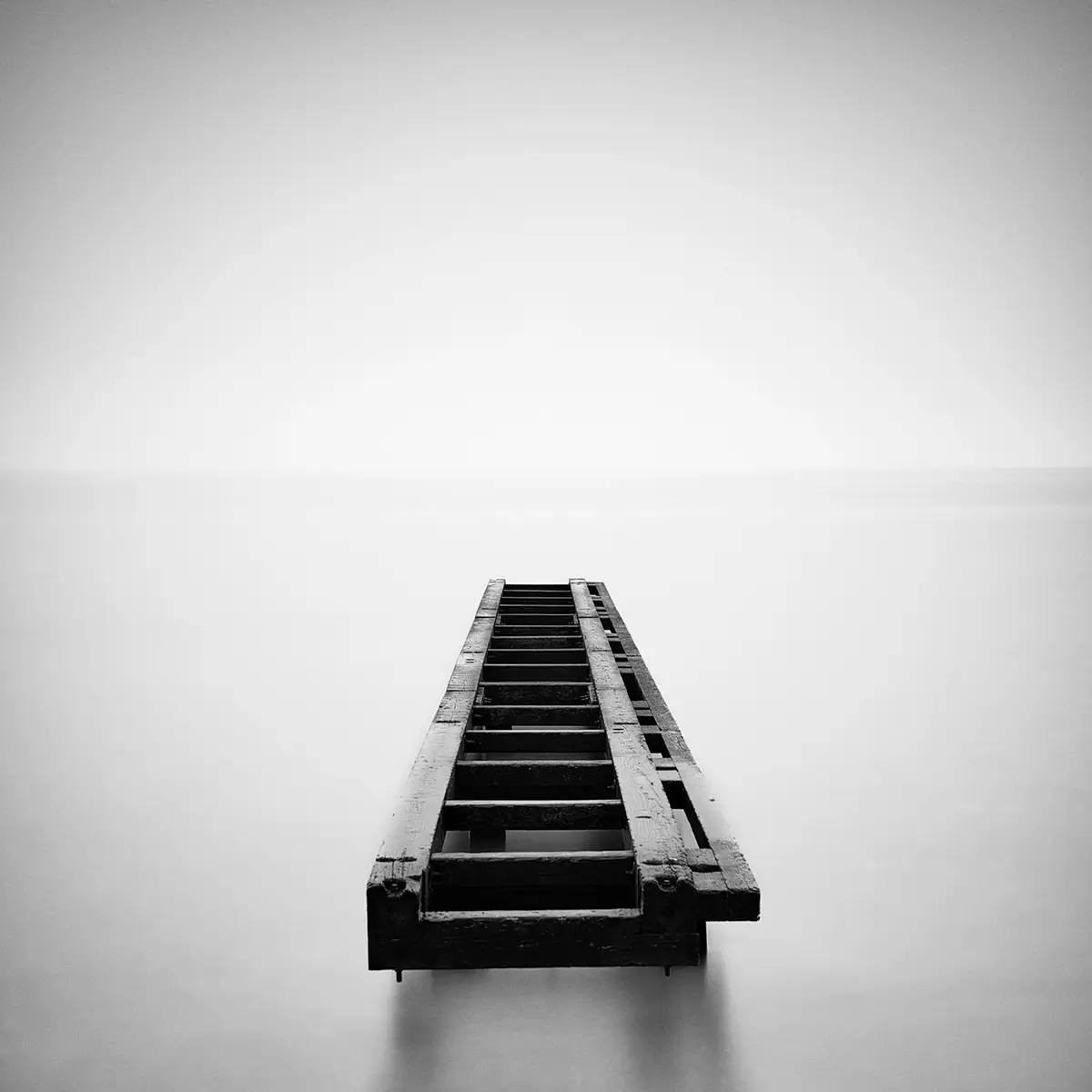
Niendorf Bathing Jetty from the series 'Two Minutes by the Sea' © Ralf Dreier
The photo was taken in November in the seaside resort of Niendorf on the German Baltic coast. The season was long over, and instead of people in swimwear, all you could see were thick winter coats. The planks had been removed from this bathing jetty, perhaps to be stored or refurbished over the winter.
The project ‘Two Minutes by the Sea’ is a spin-off from the overarching project ‘By the Sea’, which is about long exposures of coastal regions with an exposure time of two minutes. The resulting minimalist black and white images show the viewer an unusual view of the sea. The simplicity of the images in particular focuses the eye on the main motif, but at the same time leaves enough space to prevent it from appearing too dominant. As a result, the pictures move away from reality and encourage the viewer to use their imagination, giving them the opportunity to combine what is actually depicted with their own emotions and thoughts, resulting in a very personal visual experience for each viewer.
galerie-farblos.de
All about Ralf Dreier
Giuseppe Cardoni (Italy)
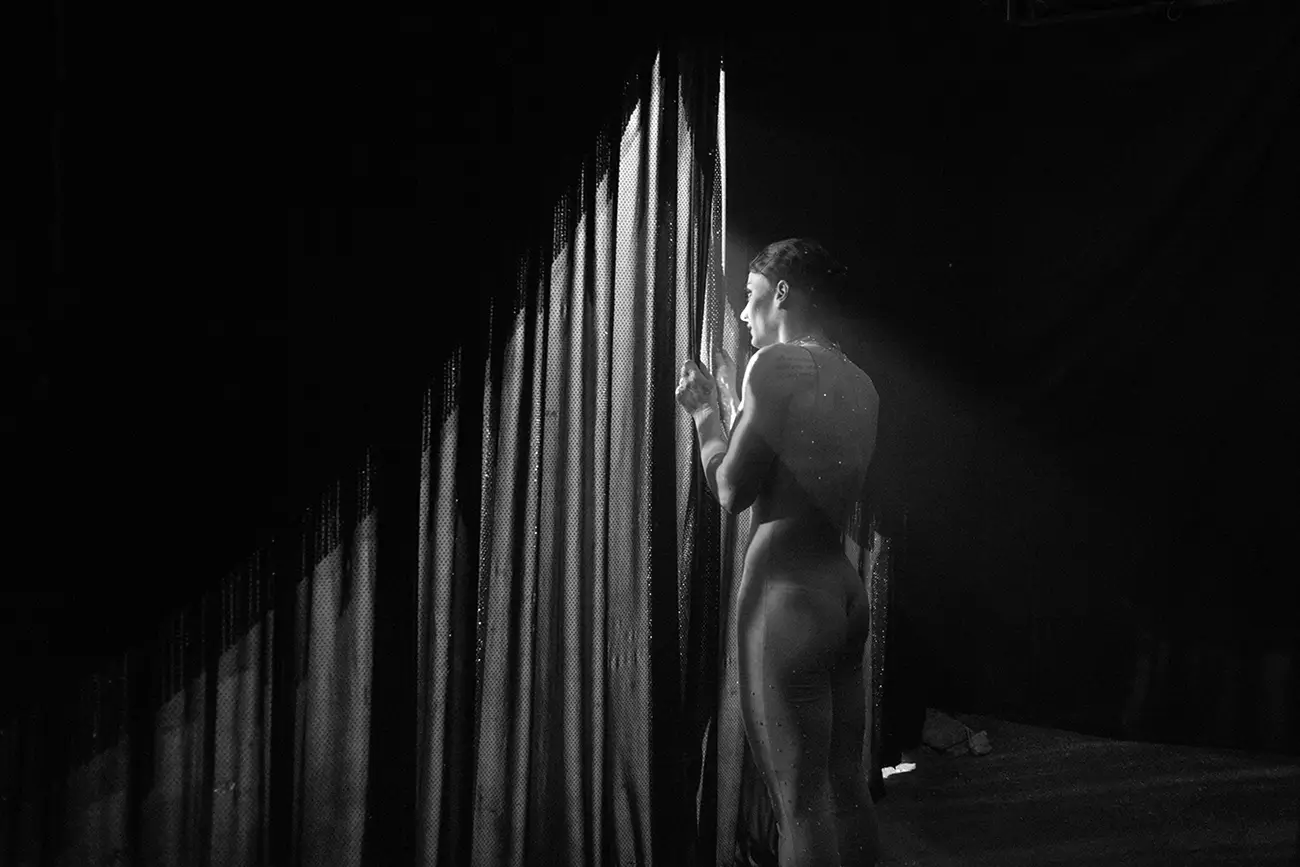
The Magic of the Circus © Giuseppe Cardoni
The circus is a large extended family in which are all more or less related to each other held together not only by affection but also by the great passion for their Art.My main interest was to tell more about the atmospheres than the performers by focusing on the moments of preparation, pause, concentration, rather than the show which is however mentioned. In this way it seemed to me to preserve at least in part the mystery and the magic that captures the spectator when the curtain opens.
All about Giuseppe Cardoni
Prescott Lassman (United States)
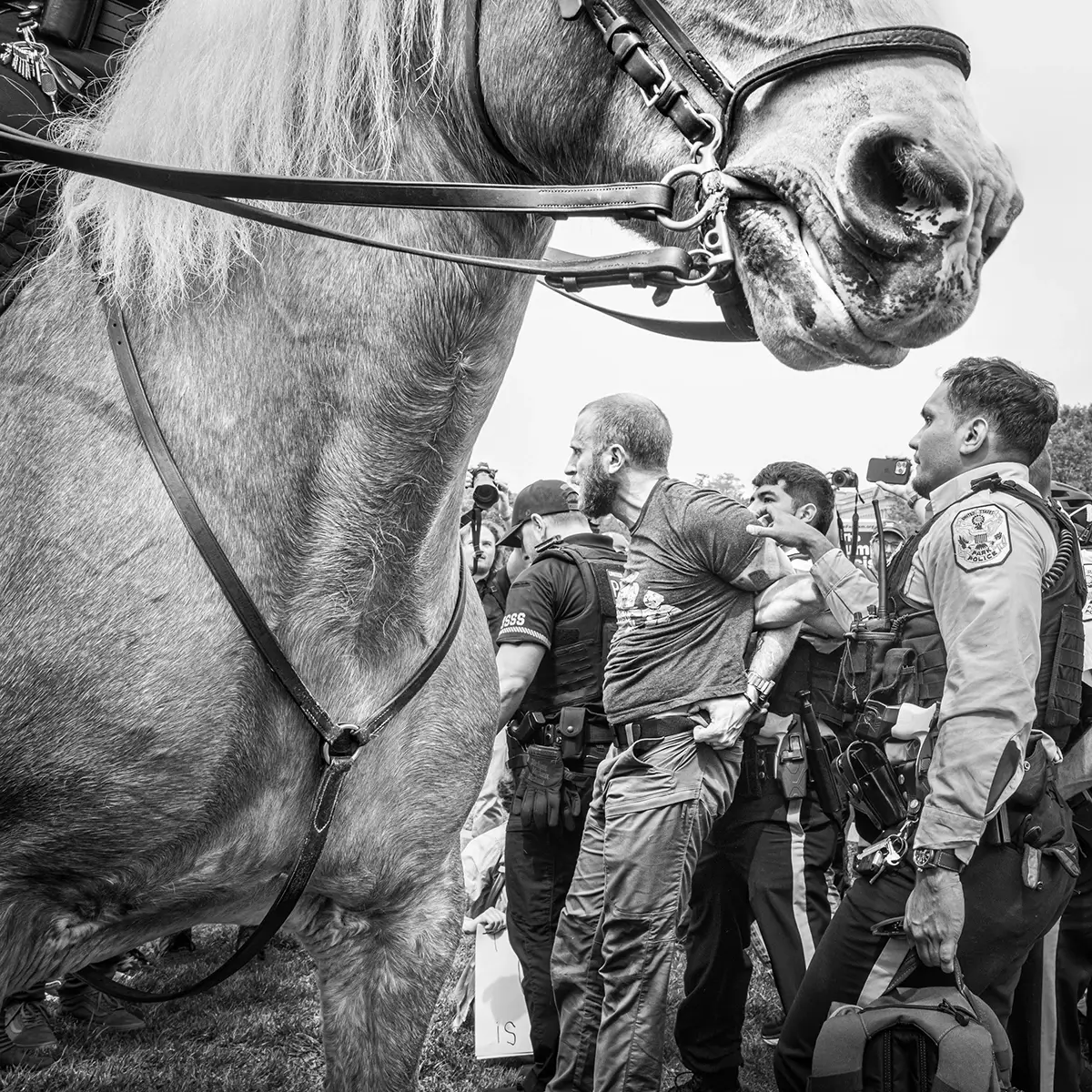
Arrested Protestor and Horse from the series Resist' © Prescott Lassman
These photographs are from a series documenting protests, marches, and other acts of resistance in Washington, D.C., my hometown. While the situation depicted by the photographs seems bleak -- with an array of government forces overwhelming the protestors -- the protestors themselves remain defiant. In the current political situation, this type of persistent defiance, no matter how small or seemingly insignificant, is particularly important.
www.lassmanlenswork.com
@lassman_lenswork
All about Prescott Lassman
Alex Gabchoug (United Kingdom)
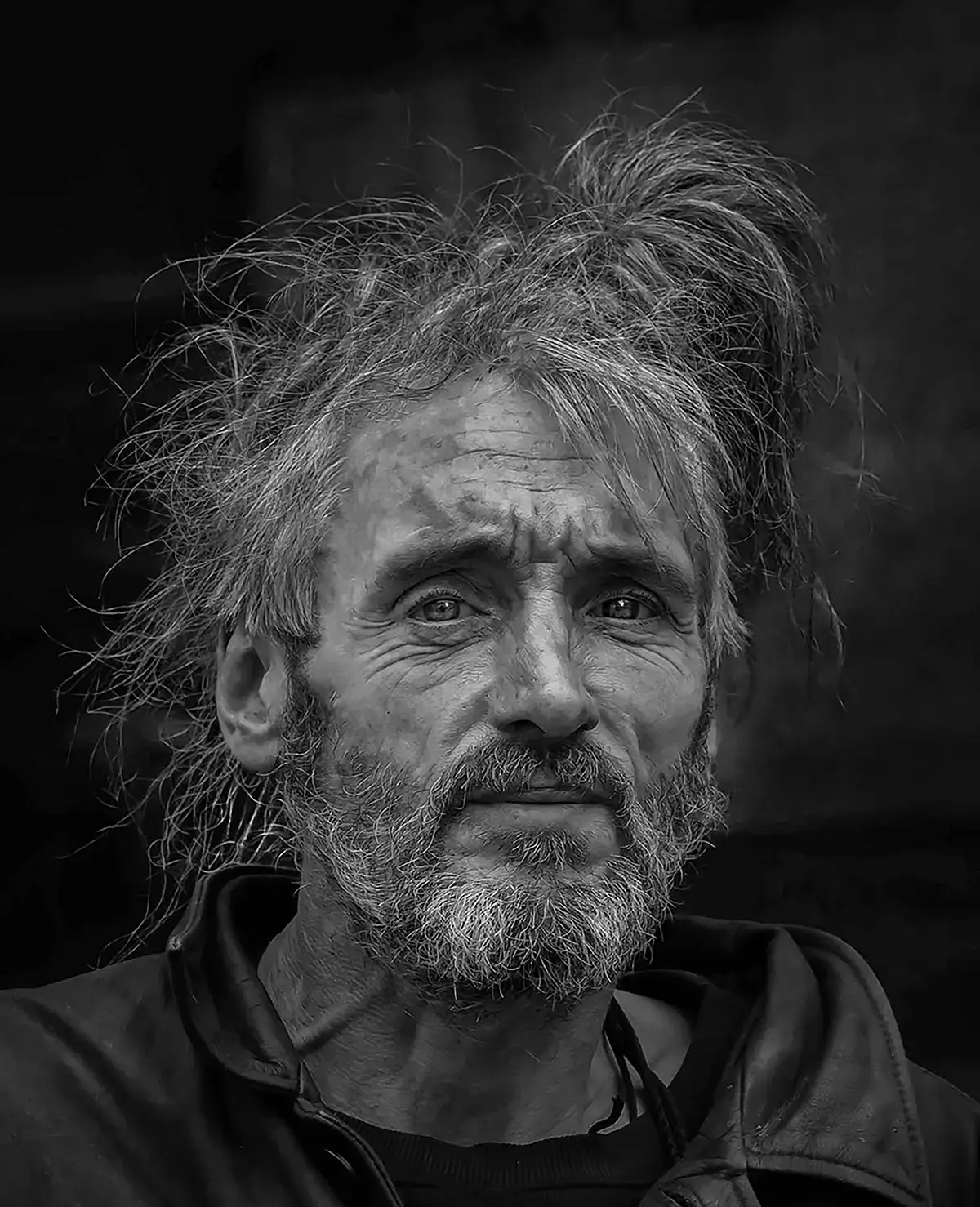
Behind Those Eyes from the series 'Street Portraits' © Alex Gabchoug
About the image: I met this gentleman whilst perusing a local cake and coffee shop for inspiration for a food photography project. I was struck by the look in his eyes and his weathered expression.
He was happy for me to take his portrait in exchange for a coffee!
www.acg-photography.co.uk
Monika Maroziene (Lituania)
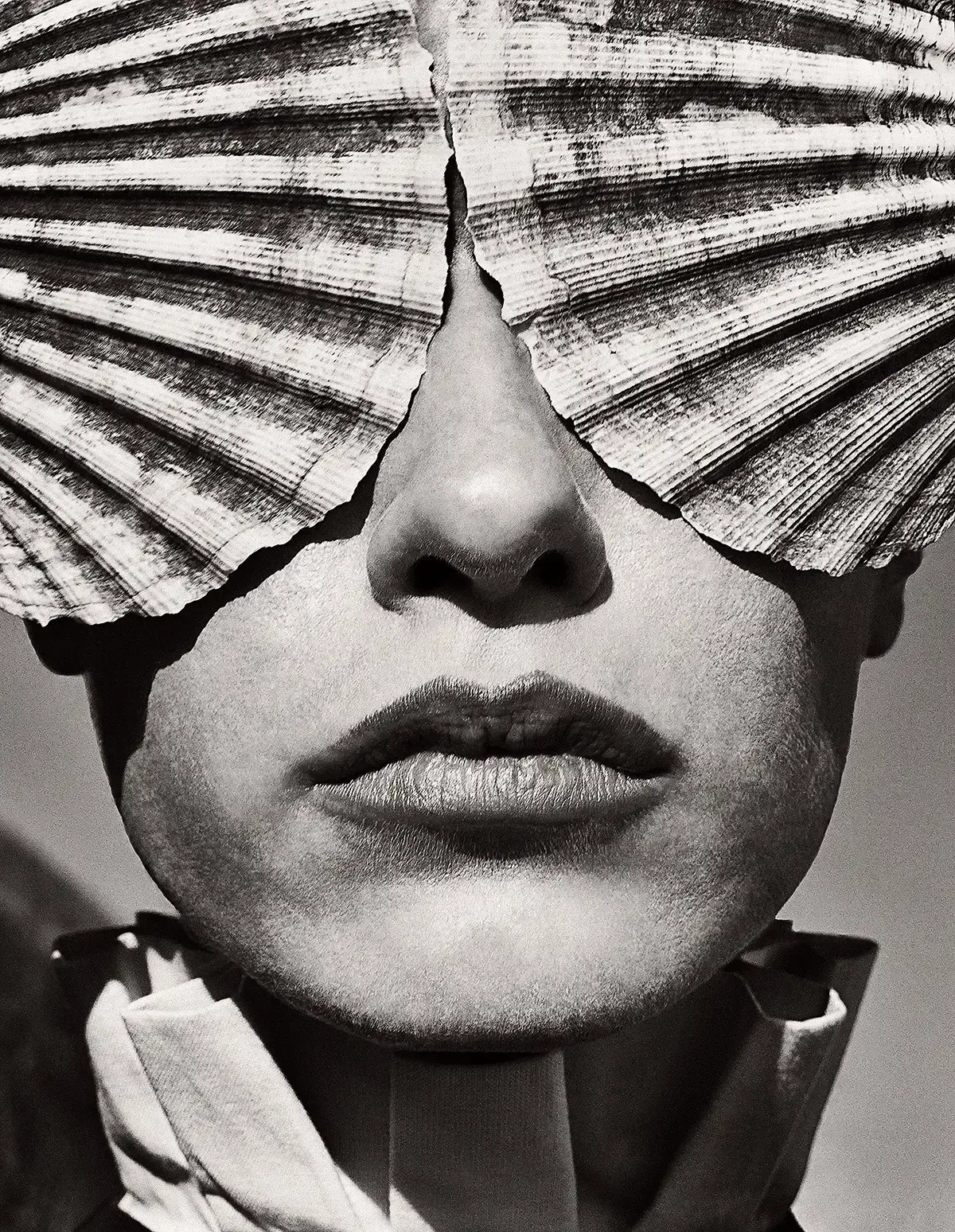
Masquerade from the series 'Amber Coast' © Monika Maroziene
My artistic practice merges my scientific expertise with a love for photography, creating a unique art form that I see as a type of alchemy. I incorporate pine tree resin into my prints, adding warmth and durability while preserving the images—symbolic of my Lithuanian roots and my connection to the natural world. My work often features black and white photography, evoking a sense of calm, solitude, and reflection, complemented by touches of resin that transport viewers to sunny, nostalgic days. Through these images, I explore themes of memory, identity, and the poetic irony of life, inspired by the landscapes of the Curonian Spit and my lifelong fascination with the mysterious, powerful presence of women and nature.
www.monikamaroziene.com
@monikamaroziene_
All about Monika Maroziene
Beamie Young (United States)
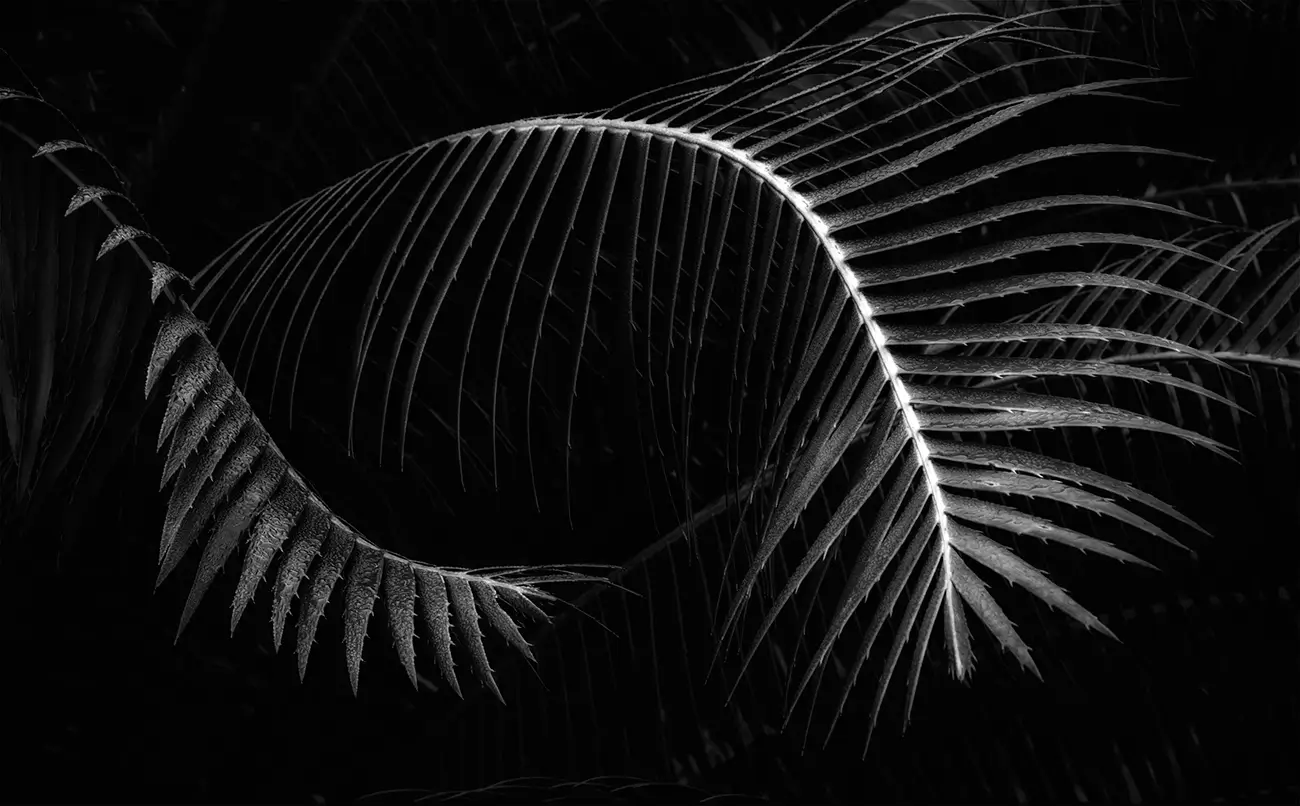
Mobius from the series Leaf Forms © Beamie Young
The rich tonalities of a black and white image have always been a source of inspiration to me. In my quest for organic patterns in nature I am drawn to the play of light I observe in the gardens around my home. The negative space in each image is as important as the plant itself and creates an important counterpoint to the leaves
beamie.smugmug.com
@beamie2
All about Beamie Young
Luciano Gerini (Italy)
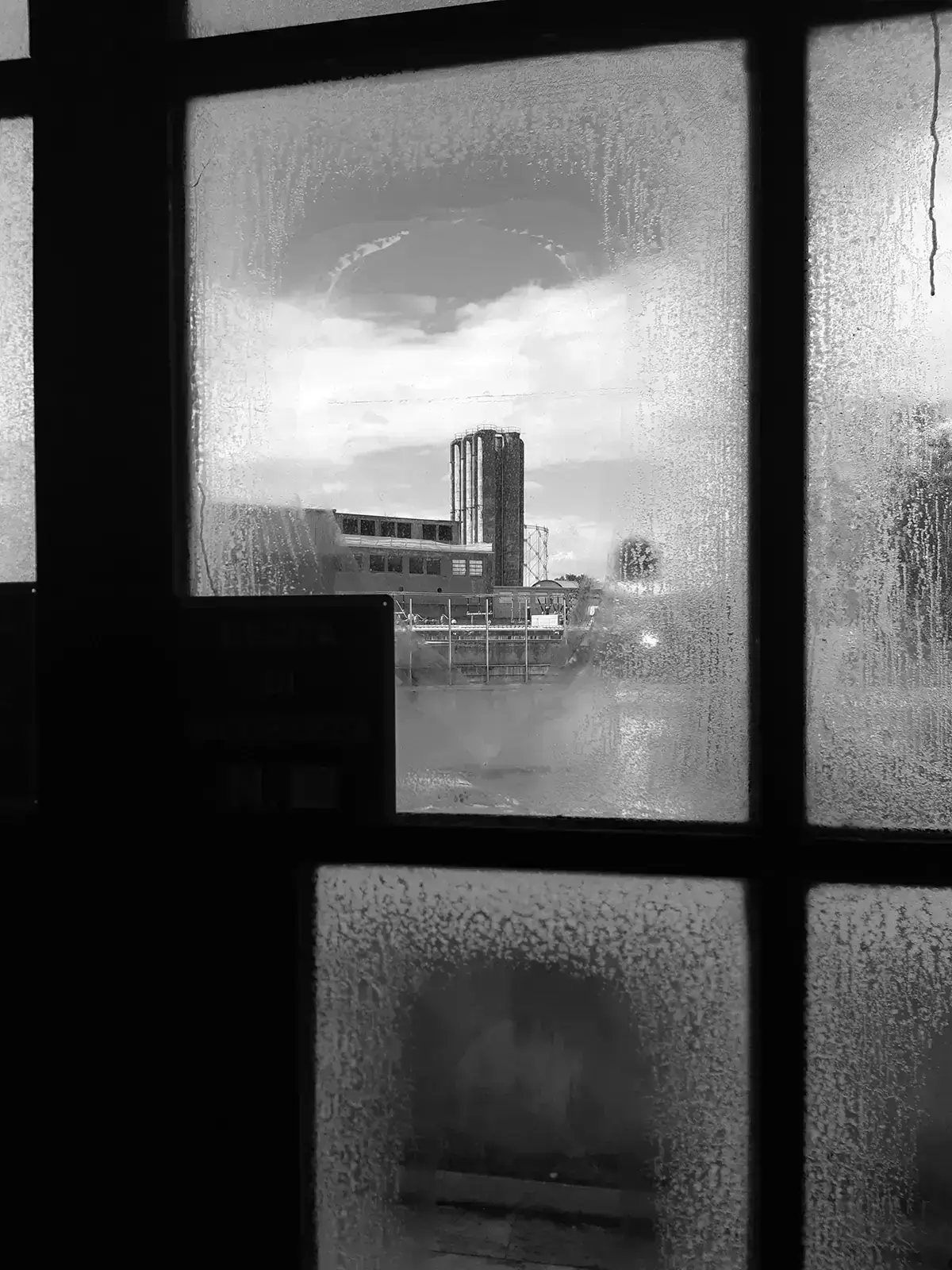
Decommissioning of an Age © Luciano Gerini
At the end of the 19th century, Rome became the capital of Italy. It therefore needed new government offices, more factories, more workforce, warehouses, general markets, energy suppliers, and so on. A new area transformed into a well-organized site with a dense network of connections to serve the new Rome. It took decades, of course...
After over a century, some structures have become obsolete due to new technologies and growing needs. The municipality and landowners want to reuse all these buildings and open spaces, preserving as much of the old forms and styles as possible.
The power plant has now become a museum, the area used as a gas depot has been transformed into an event space and offices, and the large butcher's shop has become a mix between a museum and an exhibition space.
Of course, some things have been lost, such as: the atmosphere of the old great market at dawn with its lights on and handcarts, the tumbling of the enormous gas tanks that changed the skyline of the area, the traffic of trucks, etc.
It might be interesting to know that in Roman times, there were docks and warehouses here for Roman ships sailing along the river, where goods arrived from distant countries to supply the city.
So, what am I doing here taking photos? This is my city, and I have a degree in geography, so for me the real question is: why has everything worked so well here since ancient times? What have we lost, and what could the future hold for this place? Can photos bear witness to the change? I'm working on it.
@geriniluciano
All about Luciano Gerini
Kevin Lyle (United States)
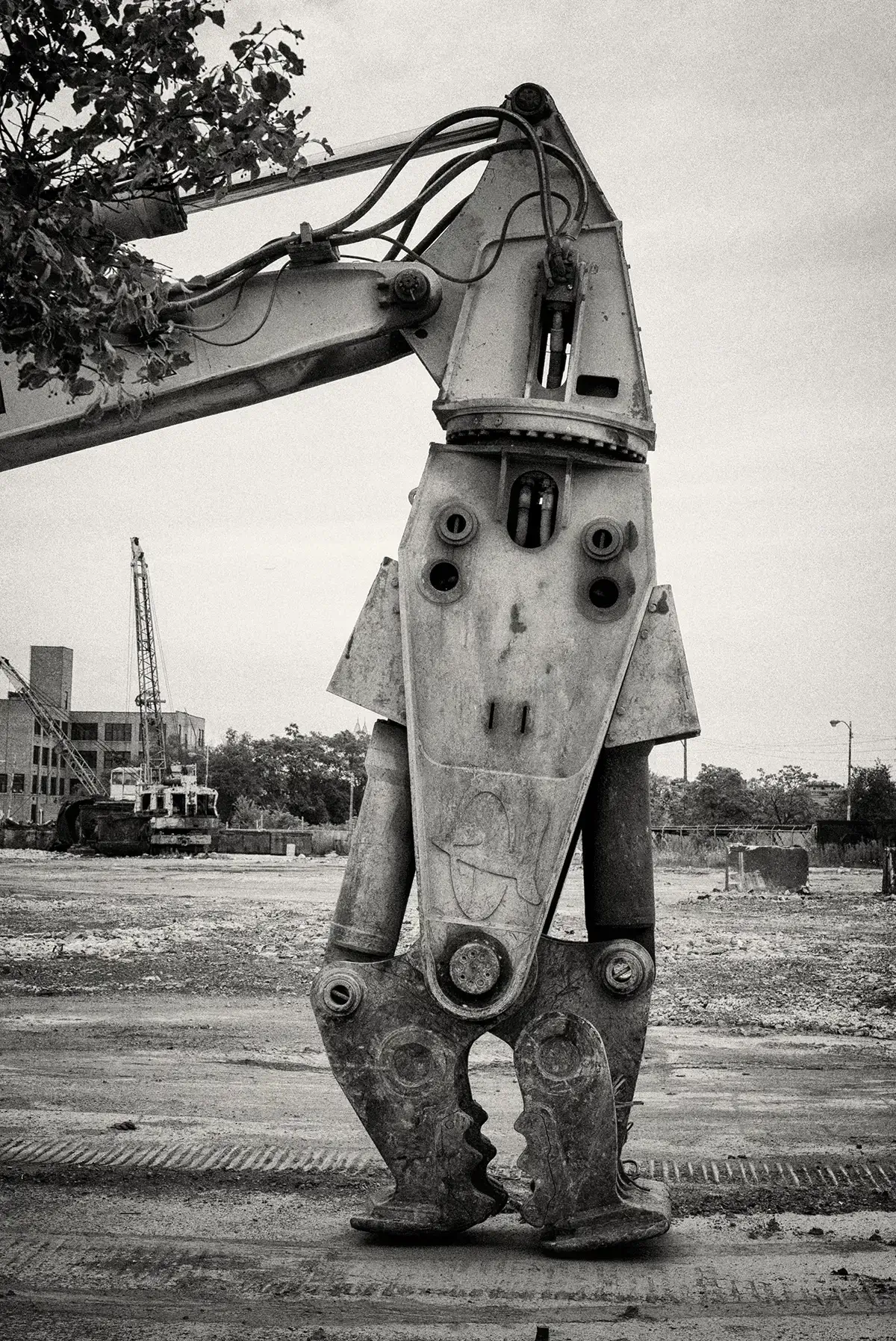
City Life 20472 from the series City Life' © Kevin Lyle
Cities are often full of drama, some more than others. The intensity of the drama within city life is balanced by simple, less dramatic vistas that may provide food for thought, humor, comfort or wonder. I present some of these simple observations.
www.kevinlylephotography.com
@klyle2006
All about Kevin Lyle
Ylva Sjögren (Sweden)

I see only what I want to see from the series 'A kind of loneliness' © Ylva Sjögren
The image ”I see only what I want to see” symbolically describes people who turn a blind eye to all facts and stubbornly clings to their own version of reality.
ylvasjogren.fotosidan.se
@ylva_sjogren
All about Ylva Sjögren
